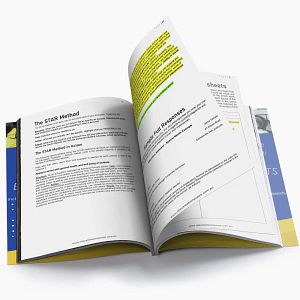
If you are applying for an Education Assistant role in WA, as well as needing to provide your CV, you will need to supply a statement addressing the Work Related Requirements (selection criteria) in the context of the role and business needs of the school. Read our education assistant selection criteria examples below.
The expected length can vary, sometimes guidelines will specify this needs to be 2-3 pages, or sometimes even more. The job ad will usually provide an example education assistant cover letter, but unfortunately this tends only to provide information on how to format the document – it does not include what sort of content is expected. Below outlines a general guide to how to write your WA Education Assistant cover letter.
For step-by-step instructions on how to write your application, check out our special guide, inclusive of HEAPS of real examples for addressing the criteria.
Addressing the Work Related Requirements (Selection Criteria)
Often, the Work Related Requirements (selection criteria) will be consistent across roles:
Education Assistant – Mainstream Cover Letter Criteria
If you are writing an Education Assistant – Mainstream cover letter, the criteria is usually:
- Sound oral and written communication skills, including the ability to interact with students, parents and teaching professionals.
- Sound interpersonal skills including the ability to work as part of a team.
- Organisational skills that will assist in the delivery of effective educational programs to students.
- Ability to assist with the general health and well-being of students.
Education Assistant – Special Needs Cover Letter Criteria
If you are writing an Education Assistant – Special Needs cover letter, the criteria is usually:
- Good written and oral communication skills, including the ability to interact with students with special needs, parents, and teaching professionals on the provision of educational programs, and to assist teachers in understanding students where necessary.
- Good interpersonal skills, including the ability to work as part of a team in the evaluation of educational programs, including special education and therapy programs where these have been implemented.
- Good organisational skills that will assist in the delivery and development of effective education programs to students and subsequent feedback to teaching professionals or psychologists.
- Ability to assist teachers or therapists in implementing educational programs, including special education and, should this be a requirement of the position, occupational and/or physiotherapy programs.
- Knowledge of health and physical disabilities in students and adolescents.
- Ability to assist with general health and well-being of students.
Job ads will likely include a summary of the school where the position is advertised, and how the role will fit into the school. Look for information about the size of the school, the student population, the priorities of the school (e.g. its programs and focus) and the school’s values. It’s important that you tailor your response to show how you will fit.
There will often be keywords within these descriptions where you can focus your examples. For example, if there is a school focus on digital technologies, you should include relevant examples in your response. You may like to go through and highlight relevant keywords and skills within the job description, prior to commencing your response, and ensure your examples are tailored.
The STAR Method
The STAR Method is an easy way to structure each of your examples. It goes like this:
Situation: What role were you in? When? Be as specific as possible. Reference the school, what student(s)/ subject you were assisting in when it occurred.
Task: Describe what you needed to do.
Action: What did you actually do? Be specific. Highlight what you PERSONALLY did.
Result: What was the result of your actions? How did your intervention/ action resolve the issue? Results can include enhanced student outcomes, school operations etc.
Education Assistant Selection Criteria Examples
The following education assistant selection criteria examples demonstrates the STAR method to structure an example for Criterion 6 for Education Assistant – Special Needs.
Note that often, more than one example is needed for each criterion to fully address it.
Ability to assist with general health and well-being of students.
Situation: As an Education Assistant at Example Primary School, Task: I volunteered to help out with the Breakfast Club a few mornings per week. Action: I helped to set up and pack down before and after the students arrived, to ensure students were able to access the meals at the Club. Result: As a result, students who had previously been coming to school hungry were now well-fed and focused and ready to learn. This was extremely successful, with noticeable improvements in student behaviour, engagement and academic performance. I was thanked for my involvement at an assembly.
Would you like to access comprehensive WA Education Assistant Cover Letter examples? Check out our special guide, inclusive of HEAPS of real examples for how you can address the criteria.
We can also write your application for you. Learn more about our selection criteria packages.



